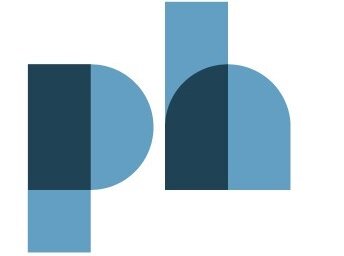The Great Pumpkin respects sincerity, and so should employers. Check out this blog for a discussion and lessons on accommodating an employee’s creed in the workplace.
Mandatory-ish: Vaccination Policies Are Not All Created Equal
Over the last few weeks, many large Canadian employers have announced “mandatory vaccination policies”. But as you dig into the details of those policies, you will find that the term “mandatory” has been used liberally. So are these policies really mandatory?
Olympic Reminders for Employers about Inclusivity
The Olympic games are on the cusp of big changes when it comes to inclusivity and equality in sports. The world is looking at what the athletes are wearing, with dress codes and uniforms sparking increased discussion. The Olympic idea of “what not to wear” offers important reminders for employers. This blog offers a useful employer’s guide to dress codes.
What’s Weird About Vacation In 2021?
Vacation time (and pay!) is another area where employers need to continue to “expect the unexpected” in 2021. Vacation accrual and usage for the last year-and-a-half has not been normal. This blog discusses 2021 vacation including the application of ESA requirements, dealing with accrued liabilities, IDEL-related issues, and “other weirdness.”
Is Uber Just Trying to Reinvent the Wheel?
Uber announced its Flexible Work+ plan, in which it provides some of the benefits that its drivers and workers’ rights groups are demanding, but without providing the traditional (expensive) entitlements that come along with full employee status. Is this a flexible work plan or a circumvention of employment laws?
What’s Weird About Terminations in 2021?
Since the onset of the pandemic, employers have been forced to adapt to the unique challenges associated with employee terminations. Terminations just seem harder this year. And it’s not just because of COVID-19. So, what’s weird about terminations in 2021?
A Rose by Any Other (Presumed) Name: A Valentine’s Lesson on the Use of Pronouns
Recognizing and using an individual’s personal pronoun in the workplace is not only a protected human right, but it is an important step in creating and maintaining a safe and inclusive work environment. This blog uses lessons from an “ideal” Valentine’s Day to demonstrate the proper way to approach personal/gender pronouns.
Kringle COVID Measures at the North Pole – How Santa Claus IS Coming to Town This Year
Like other employers throughout the world, Santa has tried to navigate through COVID-19. Grab your cocoa as we review exactly what Santa has done to ensure he still delivers joy to everyone around the world. Merry Christmas to all, and to all good health!
Zoom Calls and Slack Chats and GIFs, Oh My!: An Employer’s Guide to Bad WFH-Behaviour
It’s easy to slip into bad work-from-home (WFH) habits but some behaviours are more problematic and can give rise to a variety of workplace issues. What should employers consider when remote employees cross the line from “comfortable” to “complaint-worthy”?
CEWS Users: Planning for Additional CRA Compliance Obligations
Despite businesses’ requests to postpone audits until after the pandemic, the Canada Revenue Agency is following up on its promise to audit employers in receipt of Canada Emergency Wage Subsidy program. This blog outlines what employers need to do in order to prepare for audits and new CRA requirements.
Amendments to CEWS Program Provide Lifeline to Struggling Canadian Employers
Since its inception, multiple changes have been made to the Canada Emergency Wage Subsidy program, with the intent of broadening its reach to allow for more eligible employers to reap its benefits. This blog breaks down the key changes made to CEWS developed in response to the COVID-19 pandemic.
Employer Naivety and a Call to Revamp Workplace Social Media Policies
Employers cannot ignore that their employees have online presence, which may lead to conflict that affects the workplace. It’s 2020, and this is a call for employers to revamp their restrictive social media policies. But what does a revamp look like?
Hiring in the “New Normal” of COVID-19 – 4 Tips for Employers
With Ontario now in Phase 2 of the COVID-19 reopening process, businesses are ramping back up. Some employers might be considering hiring. But hiring in the “new normal” is… well… not quite normal.
It’s A Whole “New Normal” World - Employer Return-To-Work Considerations in the Post-COVID-19 Era (Part 4 of 4)
In this final installment of our 4-part return to work series, we look at policy and protocol considerations for employers in the post-COVID-19 workplace.
Heck No, We Won’t Go - Employer Return-to-Work Considerations in the Post COVID-19 Era (Part 3 of 4)
In this third installment of our Return to Work blog series we examine what employers should and can do when an employee refuses to return to the workplace.
COVID-19 Layoffs in Ontario Are Now Leaves of Absence: Time for Employers to Breathe a Sigh of Relief?
The Ontario government has swooped in to assist and protect businesses from being forced to terminate their non-unionized employees as a result of the expiry of the 13-week temporary layoff period. While for the most part this regulation is good news for many employers there are several items that employers need to keep in mind.
Come Out, Come Out, Wherever You Are - Employer Return-to-Work Considerations in the Post COVID-19 Era (Part 2 of 4)
In this second part of our COVID-19 return to work series, we discuss best practices for employers in addressing the health and safety considerations related to the post-COVID-19 workplace.
Heigh Ho, Heigh Ho, Its Back to Work We Go – Employer Return-to-Work Considerations in the Post COVID-19 Era (Part 1 of 4)
In this blog, we set out the intro installment of our 4-part series of guides to assist employers in determining what issues and questions they will need to consider, and how best to address them before the first employee arrives back at work.
Dusting off the 2008 Playbook to Deal with COVID-19 and the Workplace
Sure, the current COVID-19 crisis is unprecedented, but it has some parallels to 2008. This blog dusts off the 2008 playbook to advise employers during the pandemic.
Canada Emergency Wage Subsidy Details Announced – What it Means for Employers and Their Employees if they Choose the CEWS
The federal Finance Minister has now announced the details of the Canada Emergency Wage Subsidy, a wage subsidy intended to incentivize businesses to keep employees employed and on payroll during the COVID-19 outbreak, and to re-hire employees previously laid off.




















